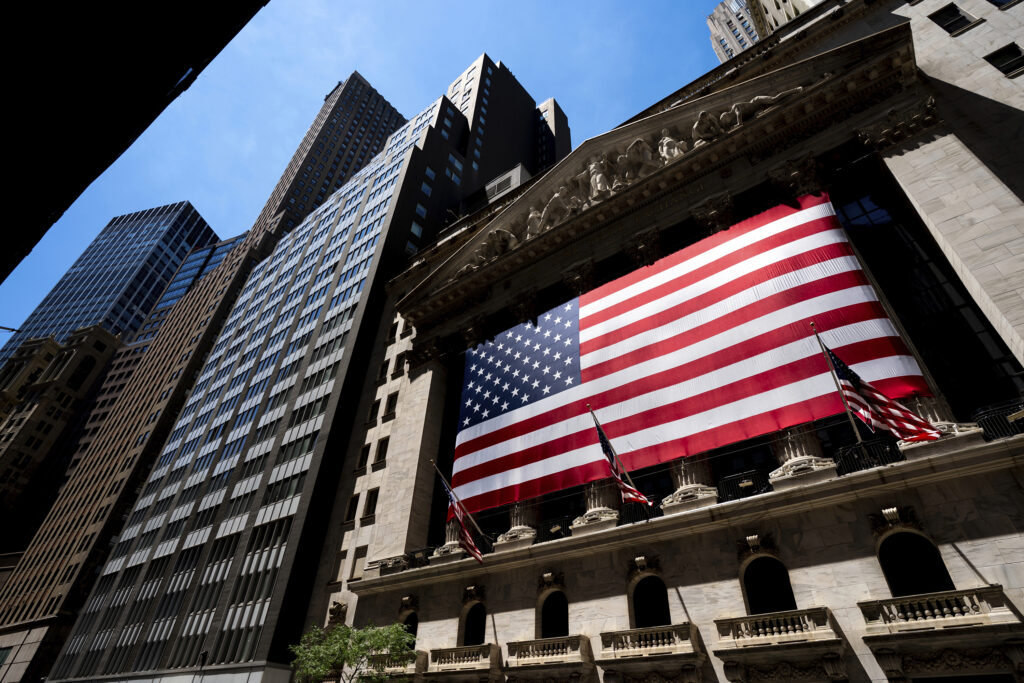U.S. stocks climbed on Monday as investors bought beaten-down shares after the main benchmarks suffered their worst weekly selloff this year on worries about tighter monetary policies. The blue-chip Dow (.DJI) erased its gains for the year in Friday’s selloff and the S&P 500 (.SPX) logged its third straight week of losses on fears of that a strong U.S. economy and high inflation will give the Fed more room to raise rates. The Associated Press has the story:
Stocks climb on Wall Street after weekly losses
Newslooks- NEW YORK (AP)
Stocks are rising Monday, clawing back some of their losses from Wall Street’s worst week since early December.
The S&P 500 was 0.8% higher in early trading and on pace for just its second gain in the last seven days. The Dow Jones Industrial Average was up 228 points, or 0.7%, at 33,045, as of 9:40 a.m. Eastern time, while the Nasdaq composite was 1% higher.
Stocks have struggled in February after a strong start to the year as reports have shown inflation and much of the overall economy are staying more resilient than expected. While the strong economic data calms fears that a recession may be imminent, it also has forced Wall Street to raise its forecasts for how high the Federal Reserve will take interest rates and how long it will keep them there.
High rates can drive down inflation, but they also raise the risk of a recession in the future because they slow the economy. They also hurt prices for stocks and other investments.
The heightened expectations for higher rates have been most evident in the bond market, where yields have shot higher in recent weeks. On Monday, yields slunk back a bit and eased some of the pressure on stocks.
The 10-year Treasury yield dipped to 3.91% from 3.95% late Friday. It helps set rates for mortgages and other important loans. The two-year yield, which moves more on expectations for the Fed, slipped to 4.80% from 4.81%. It’s near its highest level since 2007.
Yields eased after a report showed that orders for machinery, aircraft and other long-lasting manufactured goods fell by more than economists expected in January.
Economists have been expecting more softness in the economy after the Fed jacked up rates last year at the fastest pace in decades. The Fed’s key overnight rate is now in a range of 4.50% to 4.75%, up from virtually zero at the start of last year.
But reports on everything from the job market to retail sales to inflation itself have been coming in firmer than expected over the last few weeks. The fear is that if the economy stays on strong footing, it could feed into more upward pressure on inflation. That’s why expectations on Wall Street have swung so hard, from earlier thinking the Fed could soon take it easier on interest rates to now believing it could raise them above 5.25% and keep them that high through the end of the year.
Even Monday’s weaker-than-expected report on durable goods had some underlying strength. After ignoring transportation-related equipment, orders jumped last month to the biggest gain since March. It was much stronger than the drop that economists expected to see.
On Wall Street, shares of Union Pacific jumped 9.6% after the railroad announced plans to replace its CEO later this year. The company has been pressured by a hedge fund with a big ownership stake in it, one that went public with concerns about Lance Fritz’ leadership.
Energy company AES slipped 1% despite reporting better earnings and revenue for the latest quarter than analysts expected.
Most companies have already reported their results for the last three months of 2022, but nearly 30 companies in the S&P 500 are still scheduled to report this week.
Many may offer a window into how well U.S. households have been holding up amid higher interest rates and still-high inflation. Advance Auto Parts, Best Buy, Costco Wholesale, Kroger and Target are some of the companies on the schedule for this upcoming week.
Overall, this earnings reporting season has been lackluster. Companies in the S&P 500 are on track to report their first drop in earnings per share from a year earlier since the summer of 2020, when the pandemic was choking the economy.
Fewer companies than usual are also beating analysts’ expectations for profits, according to FactSet.
The worry is that an “earnings recession” may be coming, where profits for companies are set to drop from year-earlier levels for at least two straight quarters. Higher rates and other costs have been eating at companies’ profit margins, meaning they aren’t making as much profit off each $1 in sales as before.







